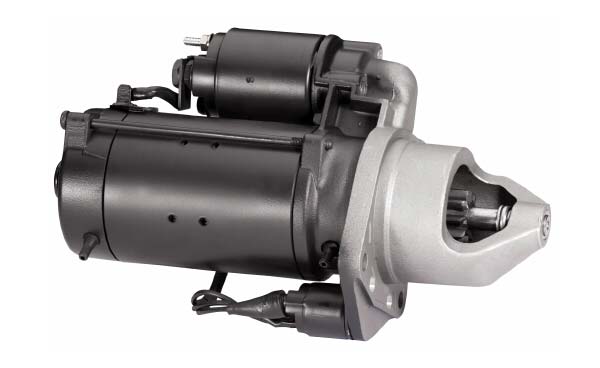Starter
Combustion engines in motor vehicles need starting assistance in order to run independently. The starter is one of the most important components of the starter system. As well as the starter, the system includes switching...
Function
Combustion engines in motor vehicles need starting assistance in order to run independently. The starter is one of the most important components of the starter system. As well as the starter, the system includes switching devices and control units, cables and the starter battery.
To reach the speed required for the engine to run independently with as small as possible a starter motor, the significantly higher speed of the starter is adapted to the engine speed by means of a ratio between starter pinion and engine ring gear.
independently. The starter is one of the most important components of the starter system. As well as the starter, the system includes switching devices and control units, cables and the starter battery.
To reach the speed required for the engine to run independently with as small as possible a starter motor, the significantly higher speed of the starter is adapted to the engine speed by means of a ratio between starter pinion and engine ring gear.
Starter design
The starter comprises the following assemblies:
- Electric motor
- Engagement system
- Freewheel
- Pinion and possibly countershaft transmission
Start-stop-starter
In addition to conventional starters, various manufacturers offer starters for use in fuel-efficient start/stop systems. These start/stop systems enable reductions of up to 8% to be achieved in CO2 emissions and fuel consumption during urban driving (ECE15 test cycle). In real urban driving situations, savings can be even higher.
The principle of operation of the start-stop-starter
The principle of operation of the start/stop system is as easy as it is efficient: When the vehicle is at standstill and the battery charge is sufficient, the combustion engine is switched off. To resume travel, simply press the accelerator to restart the engine. So, when the vehicle is stationary in traffic (in a traffic jam or at a red light, for example), no fuel is consumed and no CO2 is emitted. What's more, noise emissions are reduced to zero.The properties of the start-stop-starter
Starters for passenger cars must be lightweight, small, powerful and economical. The latest models impress with their lightweight, compact design, as lower weight reduces both fuel consumption and emissions. Furthermore, small starters create more room for design during vehicle development. The aim of future development work will continue to be to reduce frame size and weight whilst maintaining or increasing power and performance.Environmental protection
Some manufacturers also offer repaired starters as factory replacements. For repairs with fair value in mind in particular, this is an ideal alternative to a new part. Replacement devices are repaired using the very latest methods. All units are dismantled completely. The components are cleaned and repaired and all critical components are replaced. By means of the certified industrial reconditioning process, used parts are restored to as-new condition. By reusing parts and saving energy, replacement initiatives of this type make a significant contribution to conserving resources and protecting the environment. When parts are recycled, there is a reduction of almost 90% in terms of raw materials and 50% where energy is concerned compared with the production of new parts. As a result, CO2 emissions in production also fall.
Depreciation
Starters are maintenance-free. They are designed to last the service life of the vehicle. To avoid damage to the starter, the instructions provided by the vehicle manufacturer must be followed. As a general rule, the starter must only be activated in neutral and with the engine at standstill. Furthermore, releasing the ignition key immediately after the engine starts up will protect the starter against premature wear.










